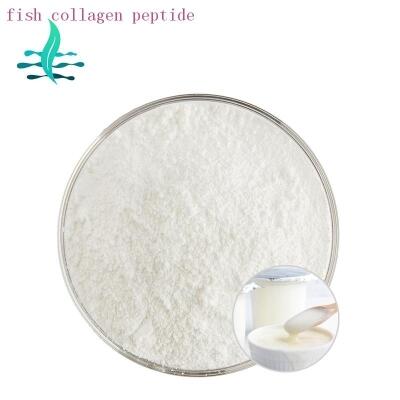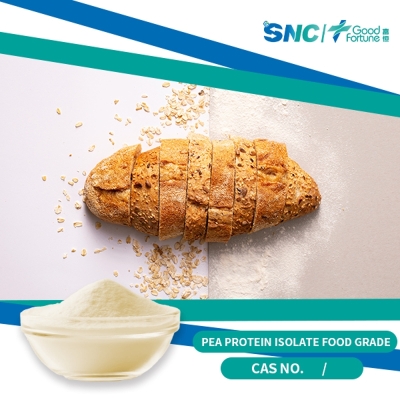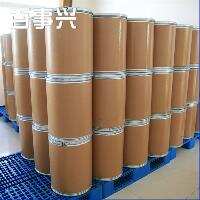The research progress of sulfur-containing amino acids in pig nutrition.
-
Last Update: 2020-07-29
-
Source: Internet
-
Author: User
Search more information of high quality chemicals, good prices and reliable suppliers, visit
www.echemi.com
(1Hunan Jiuding Technology (Group) Co., LtdTechnology Center; 2Shanghai Fujie Feed Co., Ltd.)Zxxs816.7 (document identification code) A (article number) 1002-8358 (2015) 06-31-3 Zxxabstract: Pig farming is the main component of China's livestock production, the development of pig industry is bound to develop pig feed, and by methionine and cysteine composed of healysine amino acids are an important component of heachloric acid, healyn acid is an essential component of healycosus acidThis paper mainly introduces the physical and chemical properties of sulfur-containing amino acids, metabolic mechanisms, biological functions and research progress in pig nutritionZxxkeywords: sulfur-containing amino acids; physical and chemical properties; metabolic mechanisms; biological functions; the application of Zxxpig farming industry is the main component of China's livestock production, the development of pig farming industry is bound to develop pig feed, and the methionine, cysteine and cysteine composed of sulfur amino acids are an important component of amino acids, in which helium is the second restricted amino acid of pigs, is an indispensable nutrient for pigsThey play a variety of physiological functions in animal feeding, growth, immunity, etcStudies have shown that the demand for methine is high erthosine in the fast-growing and developmental stage, and the production performance can be significantly improved by adding the right amount of methionine to the dietZxx1The licoseric properties of sulfur-containing amino acids Zxxare mainly composed of methionine, cysteine and cysteine, of which the molecular formula of methionine is C5H11NO2S, because it contains methilyth, also known as methionine, odor is special, micro-sweetening, at normal temperature is powdered crystal or white flakes, in feed additives, the application of a wide range of l-amyninesine is L-athaIn animals, L-methionine is easily absorbed, and D-methionine is converted into L-methine through enzymes to participate in the synthesis of nutrients The study found that methionine has important biological functions in the body, and there are more than 80 physiological and biochemical reactions in livestock and poultry machines involving methionine The molecular formula of Zxx cysteine is C3H7NSO2, which belongs to the adipose family with pyriline acute a-amino acids L-cysteine at normal temperature is white crystalline powdery, odorous, odorous, unstable performance, easy to be oxidized However, its hydrochloride performance is relatively stable, in acidic conditions can be long-term storage Cysteine can be synthesized in animals by methionine and serine Zxx 2 the metabolic mechanism of sulfur-containing amino acids Zxx 2.1 methionine metabolism mechanism Zxx methionine is mainly absorbed in the pig's duodenum and reflux, its absorption and transport is through the special methionine transport system energy consumption of sodium active transport, different from other amino acids, L-methionine and hydromymenine absorption efficiency is basically no difference In addition to a small amount of methionine transported through the lymphatic, most of the rest is circulated through the venous veins to the liver Zxx methionine mainly provides methyl and synthetic proteins for certain methyl compounds in pigs There are two main metabolic pathways of natural L-methine in animal tissue, namely, active methionine dependence on metabolic pathways (methyl and sulfur-to-sulfur pathways) and non-dependence on metabolic pathways (trans-ammonia pathways) Methionine is metabolized mainly by the synthesis of new proteins and non-protein nitrogen and the formation of sugars after deaminology Zxx 2.2 cysteine and cysteine metabolic mechanism Zxx mammals in cysteine is a cysteine is a necessary amino acid, which can be synthesized from the thioand and serain of methionine by the trans-sulfur route Cysteine in the diet can be transported by a variety of amino acids and peptide transport systems in the form of cysteine, cysteine and cysteine-containing peptides The transport of cysteine is mediated by a neutral amino acid transport system, including system B located on the brushed edge of the mucous membrane cells of the small intestine, and the system ASC located on the outer side of the brush edicoma and the substrate membrane, where cysteine intake is primarily an active transport process of Na-dependence The body's cysteine contains carbapenems, while cysteine contains disulfur, which can be converted into each other Cysteine can be removed directly from the body, producing acetone, NH3 and H2S The carium is oxidized into sulfony, then de-degenerated, and then produced acetone and sulphate, which oxidize into sulfuric acid Another metabolite of cysteine is taurine, which is a component of bile acid, which helps promote the digestion and absorption of lipids Cysteine is also a precursor to glutathione synthesis, glutathione in addition to special metabolic function, but also as a storage of cysteine and transport cysteine to the external tissues of the liver When the intake of cysteine is close to what is needed, most can be used in synthetic proteins and glutathione Zxx 3 The application of sulfur-containing amino acids in pig nutrition Zxx NRC (1998) made a comprehensive summary of the needs of sulfur-containing amino acids, and established a sulfur-containing amino acid demand model calculated according to the growth stage, weight and lean meat rate of pigs or the growth and reproduction performance of sows If the weight of a pig increases from 3 to 5 kg to 80 to 120 kg, the amount of sulfur-containing amino acids per kilogram of daily grain, i.e methionine and cysteine, is reduced from 7.6 g to 3.1 g, but the daily demand increases from 1.9 g to 9.5 g due to the increase in its feeding The return of the pregnant sow's resustonoic sulfur-containing amino acids required 5.7 to 6.4 g/d (the amount of food harvest ediphoned is 3.1 to 3.3 g/kg), and the requirement of the lactation period is 13.9 to 26.0 g/d (3.5 to 4.3 g/kg) However, there is a lack of research on the combination of three sulfur-containing amino acids The applicationof of methionine, cysteine and cysteine in pig nutrition is reviewed below Zxx 3.1 Methionine in pig nutrition application Zxx methionine is often due to its own physiological and biochemical characteristics are often made into different types of additive varieties, such as DL-methionine, methionine metal chelates, methionine hydroxy analogue, methionine salts and so on Although the nutritional value of methionine and its physiological function play a very important role in promoting the growth and development of animal body, but the amount added in the feed is not the more the better, excessive addition of methionine will not only cause a large amount of waste of feed resources, but also can cause methionine poisoning, and thus inhibit animal growth Zxx Swine Day reported that sows were fed with a different but gradually increasing ratio of sulfur-containing amino acids/lysine test day food, and found that throughout the lactation period, there was no significant difference in average daily feeding, weight loss and back loss, and plasma urea nitrogen content (P.14) At the same time, piglets were not affected by weaning weight or pre-weaning mortality (P.25) The results showed that the amount of demand for the total digestible sulfur-containing amino acids of the reflux of lactating sows did not exceed 50% of lysine The use of tissue can be used as a possible source of total sulfur-containing amino acids, thus reducing the amount of feeding sows needing total sulfur-containing amino acids in japanese grain, and the metabolism of sulfur-containing amino acids is particularly important for the nutritional support of newborn piglets In newborn piglets, cystitase secretion is less, which limits the synthesis of plysin Piglets in the lactation stage, breast milk is almost the only source of nutrition, milk containing sulfur-based acid levels are very important Lin Yingcai and other candidates used 84 head 14-day-old, weighing about 3.6kg of three-yuan hybrid (Du-yuan) weaned piglets as experimental animals to study the levels of pythlynine (0.28%, 0.32%, 0 Effects of .36%, 0.40%, 0.44%, 0.48%, and 0.53%) on the production performance and serum urea nitrogen concentration of ultra-early weaned piglets, the results showed: 0.28% to 0.48% of eggs Within the range of methine levels, with the increase of mythanine level, the average daily weight gain of piglets increased significantly (P 0.05), the material weight ratio was significantly reduced (P 0.05), the feeding amount increased (P.05), and the nitrogen concentration of serourea was extremely high Significantly reduced (P 0.01); but the production performance of the methionine group of 0.44% was very close to that of the 0.48% group of piglets (P 0.05); the production performance of the group of pythionine 0.53% of the piglets tended to decrease So the Met demand parameter of 3.6kg super early weaning piglets is 0.44% of the grain By adding DL-methionine (DLM) and its hydroxy analogue DL-2-hydroxyl-4-methylthyl butyric acid (HMB) to the diet, Li Hao studied the effects of different methionine levels on the growth performance of lactators and piglets during and after weaning, and found that adding high levels of methionine could improve the blood of lactators The concentration of sulfur-containing amino acids in the pulp, as well as the content of fat and protein in milk, improve the level of methionine, can promote the weight gain during feeding period, improve the amount of food harvested after weaning piglets, promote the growth of weaning piglets, but also can improve the antioxidant properties of piglets, reduce the damage caused by weaning to the intestines, promote the growth and development of the intestinal mucosal membrane sour At different stages of growth, the amount of methionine needed by pigs and the total demand for methionine and cysteine are different Cheng Chuanfeng divided 36 healthy dudite hybrid piglets with an average weight of about 23 kg into 6 groups, and fed methionine levels of 0.18%, 0.24%, 0.30%, 0.36%, 0.42% and 0.48% of low-protein daily grain, the results showed that 0.330 added The celifie of 0% had a significant positive effect on the growth performance of piglets such as daily harvest ingenuity and daily weight gain, while the effect sephoninin in piglets' peripheral blood was significantly improved, as well as on cytokines in serum serosas such as IL-2, niobium-IFN and TNF-alpha, and significant effects on piglets' spleen and thymus index Chen Ying and so on by comparing the use of different methionine sources in weaned pig food effect, found that the most suitable addition of L-Met is 0.105%, excessive addition will inhibit the growth performance of piglets, and L-methionine can be used as a source of methionine for weaned pigs, and dL-methionine in piglets application effect is comparable Wang Rongfa through the line model and secondary regression analysis found that, when the level of sulfur-containing amino acids in low-protein diet of pigs is 0.46%, the growth of pigs harvesting low-protein daily grain can obtain the best production performance, the maximum should not exceed 0.49%, Lys: (Met and Cys) , 100:55-59 is the more suitable range The relative ratio of sulfur-containing amino acids also varies according to the production purpose, and the SAA required for optimal production performance and maximum nitrogen utilization of pigs grown under low protein daily grain is lower, with a ratio of 40% to 50% with lysine, with an average of 45% The SAA/Lys ratio is higher when the goal is to reduce fat deposition, which can be as high as 58% to 65% Zxx 3.2 cysteine and cysteine in pig nutrition application Zxx in animals, methionine can be converted into cysteine and cysteine, such as insufficient cysteine in the diet, will increase the need for methionine When cysteine is satisfied or excessive, because cysteine cannot be converted into methionine, it is only a relatively saving part of methionine converted to cysteine Cysteine is an important intermediate metabolite in the methionine metabolic to sulfur pathway, and the conversion between it and cysteine is reversible, thus indirectly participating in the synthesis of sulfur-containing biologically active substances such as glutathione and taurine Adding cysteine to methionine feed inhibits the transsulfurization pathway of methionine metabolism, which in turn promotes its remethylation pathway and slows down the further degradation of methionine At present, cysteine and cysteine in pig production nutrition research is still less, on the effects of cysteine and cysteine on animal production performance, there is no conclusion, this may be related to the metabolism of cysteine and test diet methionine levels, in the absence of methionine, the higher level of cysteine in the diet can promote animal growth, and when the level of methionine in the food is met, high cysteine on animal growth Xie Ming et al believes that there is a significant interaction between methionine and cysteine in the absence of methionine, while there is no significant interaction between methionine and cysteine under the condition of methionine sufficient In conditions of extreme lack of methionine (0.285%), cysteine exhibited a certain growth-promoting effect, while methionine was moderately lacking (0.385%) condition Zxx cystamine has been widely used as a substance to improve cytoplasmic maturation by improving intracellular GSH in the in vitro maturation experiment of mammalian oocytes The study of Zhou Ping(22) showed that the addition of cystic amine and cysteine to the in vitro mature culture solution increased GSH levels in goat's COCs cytoplasm, thus significantly increasing the blastocyst development rate and GSH levels in goat DOs when both cysteina and cysteine existed Wang Xiaoming and others also reported that the concentration of GSH in pig oocytes increased with the increase of cysteine concentration and the extension of culture time, and 0.10 mg/mL cysteine pig lety the pig egg sinner mature culture 48 h effect is the best, can significantly improve the in vitro maturation and in vitro fertilization effect of pig oocytes (P 0.05) Funahashi et al added cysteine to pig semen and found to significantly improve sperm activity and top body integrity In addition, the addition of 5.0mmol/L cysteine to sheep frozen semen dilution can significantly improve CAT, GSH-PX activity, sperm activity and top integrity, reduce malformation rate and MDA concentration, so the addition of 5.0 mmol/L cysteine to the frozen dilution can effectively protect sperm from peroxide damage In the daily grain containing sulfur amino acid deficiency or low cysteine/sulfur-containing amino acid ratio, different levels of L-Cys were added, which had a significant effect on the average body weight gain, average feeding volume and average yield of meat in the broiler chicken (P.01) Zxx cysteine water does not affect the performance of DLM on the production performance of broiler chicken, but can significantly affect the role of methionine hydroxysimilar free acid (DLMHA-FA) on the production performance of broiliate chicken, can significantly improve the total glutathione peptide (TGSH) and oxidized glutathione (GSSH) levels in the bricular muscle TGSH, GSSH levels and GHH levels Cysteine can significantly improve the use of DL-MHAFA in the liver of broiler chicken, but has no significant effect on the use of DL-methionine Zxx 4, conclusion Zxx methionine is one of the essential amino acids in animals, together with cysteine and cysteine to form sulfur-containing amino acids, the appropriate amount of sulfur-containing amino acids on the production and reproduction performance of pigs have important effects, but also need to be tested.
This article is an English version of an article which is originally in the Chinese language on echemi.com and is provided for information purposes only.
This website makes no representation or warranty of any kind, either expressed or implied, as to the accuracy, completeness ownership or reliability of
the article or any translations thereof. If you have any concerns or complaints relating to the article, please send an email, providing a detailed
description of the concern or complaint, to
service@echemi.com. A staff member will contact you within 5 working days. Once verified, infringing content
will be removed immediately.







